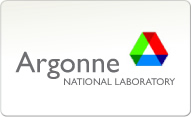
Enhanced Renewable Methane Production System Benefits Wastewater Treatment Plants, Farms, and Landfills
Argonne National Laboratory
Contact ANL About This Technology
Researchers at Argonne National Laboratory have developed a low-cost process that accelerates biological methane production rates at least fivefold — the Enhanced Renewable Methane Production System. The system could enhance biological methane production at wastewater treatment plants, farms, and landfills. This system addresses one of the largest barriers to the expansion of renewable methane — the naturally slow rate of production. To overcome this challenge, Argonne researchers examined the natural biology of methane production, the natural processes for carbon dioxide sequestration, and the environmental quality of the water found in coal bed methane wells. Their research led to the novel, low-cost treatment to accelerate biological methane production while sequestering CO2. The treatment enhances the heating value of biogas, delivering a gas that is close to pipeline quality. In addition, the renewable methane process leaves coal's environmental pollutants, such as sulfur and mercury, in the ground, avoiding their emissions.
DescriptionThe Enhanced Renewable Methane Production System provides a method for biological methane production from a carbonaceous feedstock to generate methane, while simultaneously sequestering the CO2 produced during the process by reacting with magnesium and calcium silicate rocks. This process links the biological conversion (renewable carbon source being converted to methane and carbon dioxide) to a geochemical mechanism (producing solid carbonate-enriched minerals), thus sequestering the CO2.
Benefits- Produces pipeline- or near-pipeline-quality methane
- Enables simultaneous carbon dioxide sequestration
- When the technology is used with coal, ensures that environmental pollutants, such as sulfur and mercury, remain in the ground, avoiding their emissions
- Wastewater treatment plants
- Recovery of methane from agricultural processing
- Coal bed methane
- Landfill methane production
- Methane from other carbonaceous feedstock
Development Stage | Availability | Published | Last Updated |
|---|---|---|---|
| Prototype - Laboratory-scale testing is complete. Prototype-scale testing planned for 2012 with field-testing to follow. | Available - This catalyst technology is available for licensing. | 03/19/2012 | 03/19/2012 |


